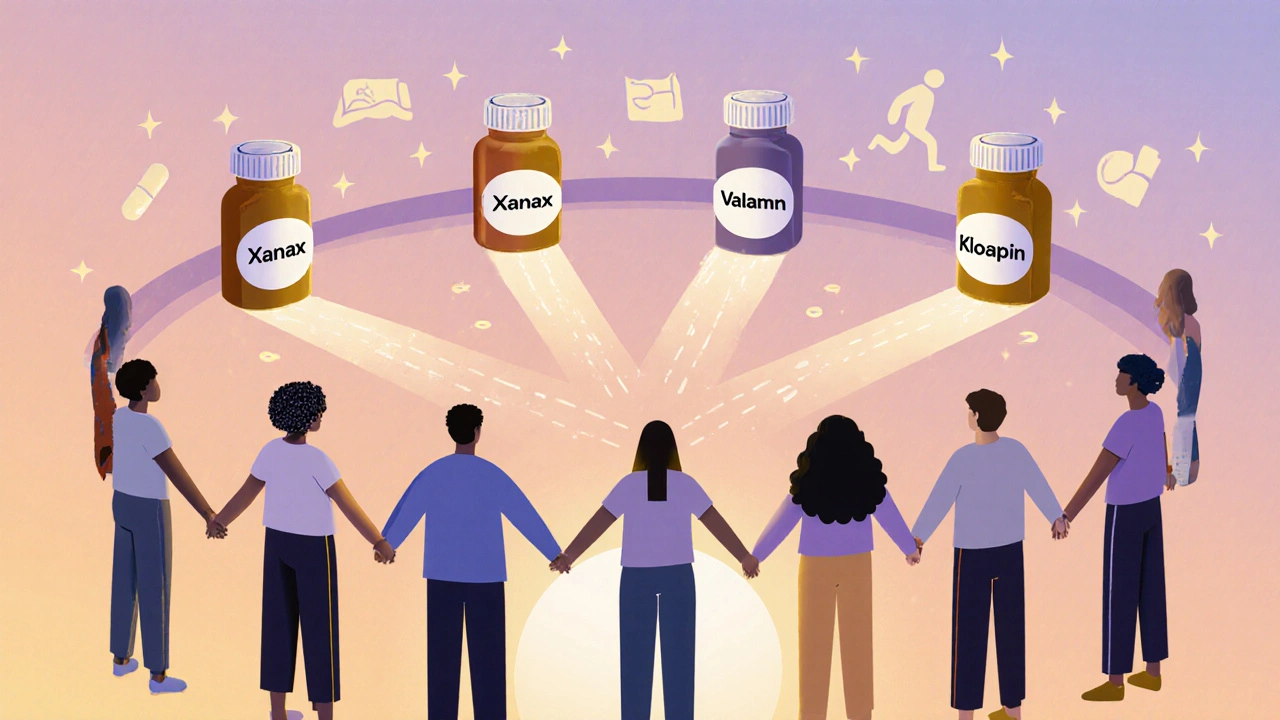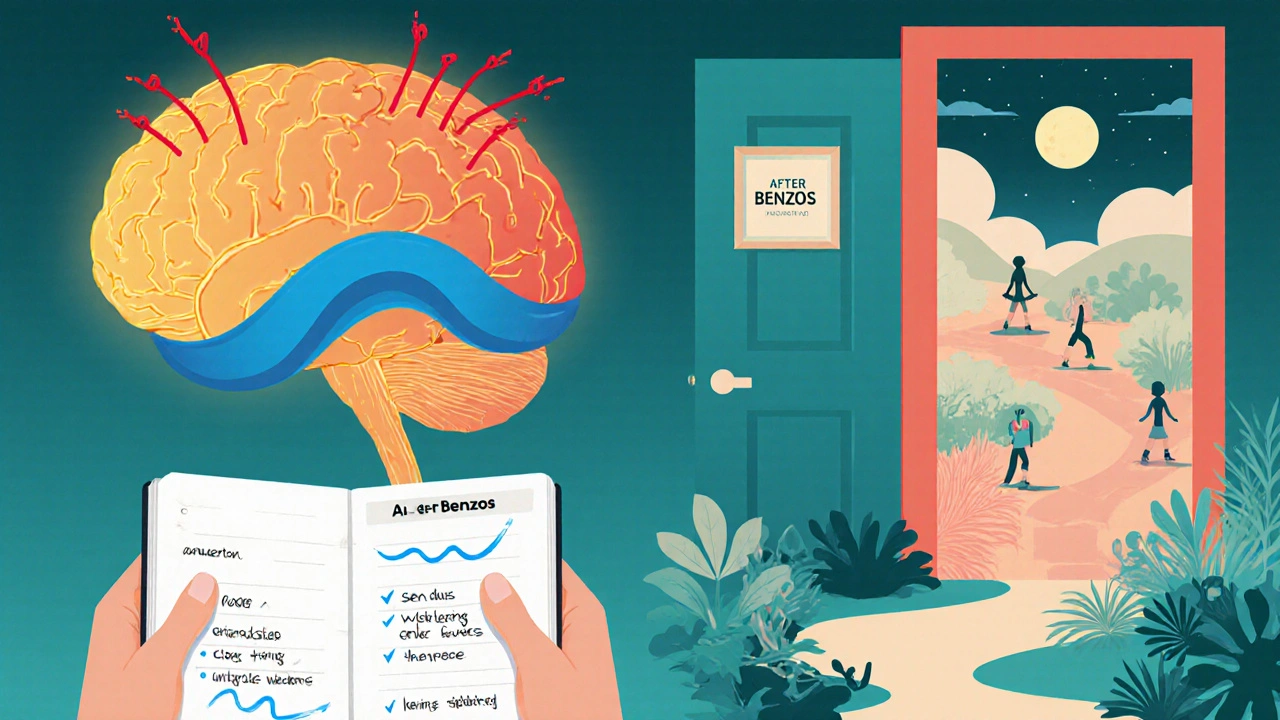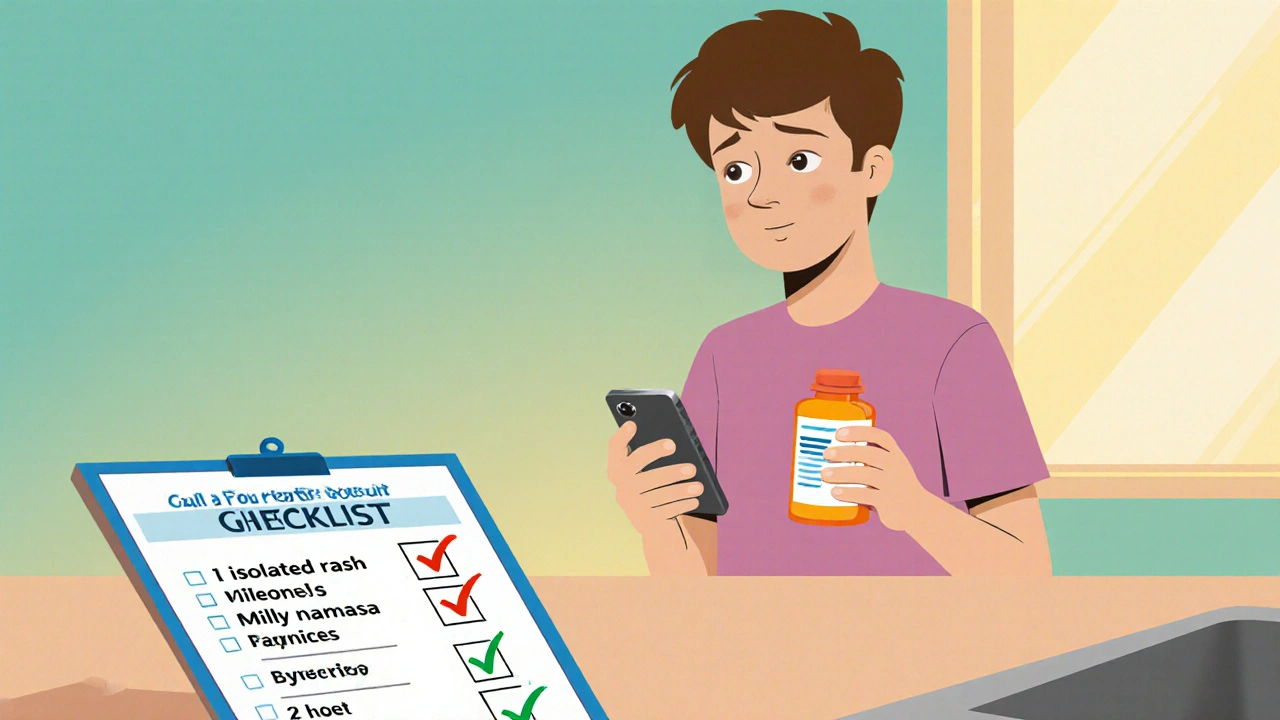
Stopping benzodiazepines cold turkey can be dangerous. For people who’ve been taking them for months or years, sudden discontinuation can trigger seizures, panic attacks, hallucinations, or even life-threatening complications. Yet many patients are stuck on these medications long after they’re needed-often because no one ever showed them how to get off safely. The good news? benzodiazepine tapering works. When done right, it helps people regain control without the terror of withdrawal.
Why Tapering Matters More Than Ever
In 2022, over 30 million American adults used benzodiazepines like Xanax, Valium, or Klonopin. Nearly 1 in 6 used them long-term-meaning more than 120 days. That’s not just a number. It’s your neighbor, your parent, your coworker. Many started for anxiety or insomnia, then kept taking them because quitting felt impossible. The risks grow with time. Long-term use increases chances of falls in older adults, memory problems, car accidents, and even higher death rates in people with PTSD. The FDA warned in 2019: sudden withdrawal is harmful. Now, 28 states require doctors to create tapering plans for prescriptions longer than 90 days. The Department of Veterans Affairs cut long-term benzo use by nearly 24% between 2020 and 2023 by enforcing structured tapers. This isn’t optional anymore. It’s standard care.How Fast Should You Taper?
There’s no universal timeline. Your taper depends on how long you’ve been taking the drug, your dose, your age, and your mental and physical health. But here’s what the 2024 Joint Clinical Practice Guideline recommends based on real-world data:- If you’ve been taking benzos for 2-8 weeks: taper over at least 2 weeks
- For 8 weeks to 6 months: taper over at least 4 weeks
- For 6 months to a year: taper over at least 8 weeks
- For over a year: taper over 6 to 18 months
Which Benzodiazepine Are You Taking?
Not all benzos are the same. Short-acting ones like alprazolam (Xanax) and triazolam (Halcion) leave your system fast. That means withdrawal hits harder and sooner. Long-acting ones like diazepam (Valium) stick around longer, making withdrawal smoother. That’s why switching to diazepam is often the smartest move. Here’s the conversion:- 1 mg of alprazolam = 20 mg of diazepam
- 0.5 mg of lorazepam (Ativan) = 10 mg of diazepam
- 1 mg of clonazepam (Klonopin) = 10 mg of diazepam
Three Proven Tapering Methods
There are three main ways to taper, and each has its place:- Same medication taper: You slowly reduce your current benzo. Best for people on low doses or long-acting drugs like diazepam.
- Switch to diazepam: You transition from your current benzo to diazepam, then taper down. This is the gold standard for most people, especially those on short-acting drugs.
- Adjunct medications: Use non-addictive drugs to ease withdrawal symptoms. SSRIs for anxiety, melatonin or trazodone for sleep, or gabapentin for tremors and nerve discomfort. These aren’t replacements-they’re support tools.

Who Should Avoid Tapering?
Tapering isn’t for everyone. Some people need to stay on a low dose because alternatives haven’t worked. That’s okay. But you should consider tapering if:- You’re over 65 (benzos increase fall risk by 40%)
- You have a history of substance use disorder
- You’re taking multiple benzos or mixing them with opioids or stimulants
- You’ve been diagnosed with cognitive impairment or traumatic brain injury
- You have PTSD and are on benzos long-term (VA guidelines call this a high-risk practice)
What Happens During Withdrawal?
Withdrawal symptoms aren’t the same for everyone. Some feel mild anxiety. Others get severe insomnia, muscle spasms, or feel like they’re floating. Symptoms usually start 1-4 days after a dose reduction and peak within a week. They fade over days to weeks. Common signs:- Increased anxiety or panic attacks
- Insomnia or nightmares
- Tremors or muscle twitching
- Sensory changes (light sensitivity, ringing in ears)
- Heart palpitations or dizziness
- Nausea or vomiting
What Works Better Than Just Cutting Dose
Medication alone isn’t enough. Studies show that when people combine tapering with cognitive behavioral therapy (CBT), success rates jump from 42% to nearly 68%. CBT helps you learn new ways to handle anxiety, sleep problems, and stress without relying on pills. Other helpful supports:- Regular check-ins with your prescriber (every 1-2 weeks during taper)
- One pharmacy and one doctor only (to prevent accidental overuse)
- Time-limited prescriptions (e.g., only enough for 7-14 days at a time)
- Peer support from people who’ve done it before
- Apps that track symptoms and suggest adjustments (NIH is testing these now)

What to Do Before You Start
Don’t just cut your dose and hope for the best. Prepare first:- Get a full medical review-check for liver or kidney issues that affect drug processing
- Treat co-occurring conditions like depression or chronic pain
- Review your history: when did you start? Why? What happened when you tried to quit before?
- Build your support system: family, therapist, support group
- Write down your goals: better sleep? Clearer thinking? Less anxiety?
What to Avoid
Don’t:- Switch between different benzos on your own
- Use alcohol to “calm nerves” during withdrawal (it worsens symptoms)
- Try to taper while under major stress (divorce, job loss, illness)
- Stop because you feel “fine” after a few weeks-withdrawal can come back later
- Rely on online forums for dosing advice-every body reacts differently
What Comes After
Getting off benzos is just the first step. The real win is replacing them with healthier habits. Many people find relief through:- Regular exercise (even walking 30 minutes a day helps anxiety)
- Mindfulness and breathing techniques
- Structured sleep routines (no screens before bed, same wake-up time)
- Therapy for underlying trauma or chronic stress
- Non-addictive medications like SSRIs or buspirone
Can I taper off benzodiazepines on my own?
While some people do, it’s risky. Withdrawal can be dangerous, especially with short-acting benzos like Xanax. Seizures, psychosis, and severe anxiety are possible. Medical supervision reduces those risks significantly. Even if you feel fine, your body may be changing in ways you can’t feel. Always work with a doctor.
How long does benzo withdrawal last?
Acute withdrawal usually lasts 1-4 weeks after the last dose reduction. Some symptoms, like anxiety or sleep issues, can linger for months-this is called protracted withdrawal. It’s not a relapse. It’s your nervous system recalibrating. Most people improve steadily over 3-6 months with support and healthy habits.
Is it safe to taper if I’m older?
Yes-and it’s often critical. Older adults are at higher risk for falls, memory loss, and car accidents from benzos. The Beers Criteria lists benzodiazepines as potentially inappropriate for people over 65. Tapering under medical care reduces these risks. Slower tapers (over 6-12 months) are usually recommended for older patients.
What if my doctor won’t help me taper?
You have options. Ask for a referral to an addiction medicine specialist, psychiatrist, or geriatrician. The VA and many large health systems now have formal tapering programs. You can also contact the American Society of Addiction Medicine (ASAM) for provider directories. If your doctor refuses without explanation, seek a second opinion.
Will I ever feel normal again?
Yes. Many people report feeling clearer-headed, more energetic, and less anxious after months of being off benzos. The brain heals. It takes time-sometimes 6-12 months-but the brain regains its natural balance. You may have bad days, but they get fewer and farther between. Most people say the long-term freedom is worth the short-term discomfort.
Can I use marijuana or CBD to help with withdrawal?
Some people find CBD helps with anxiety or sleep during tapering, but research is limited. Marijuana can worsen anxiety or trigger panic in some. Neither is FDA-approved for benzo withdrawal. If you want to try them, talk to your doctor first. Don’t replace one dependency with another. Focus on proven methods: CBT, sleep hygiene, and medical supervision.






Chuck Coffer
November 20, 2025 AT 06:00Oh wow, another ‘tapering guide’ from someone who clearly never had to live through withdrawal. You know what’s worse than benzos? Listening to people who treat addiction like a DIY home renovation project. I tried ‘slow tapering’-ended up in the ER with seizures. Your ‘gold standard’? More like a death wish with a spreadsheet.
And don’t get me started on switching to diazepam. Yeah, right. Like my doctor’s gonna magically have 20mg pills lying around. Meanwhile, my pharmacy charges $800 for a 30-day supply of the ‘safe’ version. Thanks for the advice, Captain Obvious.
Also, ‘peer support’? Yeah, I joined a Reddit group. Half the people there are still on 10mg of Xanax five years later, calling it ‘maintenance.’ You call that success? I call it Stockholm syndrome with a pill organizer.
Marjorie Antoniou
November 20, 2025 AT 18:56I’ve been tapering for 14 months now. I started at 1.5mg of alprazolam daily. Switched to diazepam, cut 5% every 3 weeks. Some weeks I felt fine. Others, I cried in the shower. But I’m off now. No seizures. No hallucinations. Just me, my dog, and a lot of bad TV.
This isn’t about willpower. It’s about patience. And having someone who believes in you-even if it’s just a therapist who remembers your name.
To anyone reading this who’s scared: you’re not weak. You’re brave. Keep going. Even if it’s one percent at a time.
Andrew Baggley
November 22, 2025 AT 07:48Man, I wish I’d had this guide when I was going through it. I tried quitting cold turkey after 8 years. Ended up in a psych ward for three weeks. I didn’t even know what a ‘brain zap’ was until I felt like my skull was being rewired with a chainsaw.
Switching to diazepam? Game changer. Took me 18 months, but I slept through a full night for the first time in 7 years last week. I started walking every morning. No meds. Just me, my sneakers, and the sunrise.
And yeah, the anxiety came back sometimes. But now I know it’s just my nervous system catching up. Not a sign I’m failing. Just a sign I’m healing.
Don’t let anyone tell you it’s ‘all in your head.’ It’s in your brain. And your brain can heal. It just needs time.
Also-CBT saved my life. If you can get it, do it. Even if it’s just 10 minutes a day on a free app.
Frank Dahlmeyer
November 23, 2025 AT 19:46Let me tell you something, folks-this isn’t just about tapering. This is about reclaiming your soul. Benzodiazepines don’t just numb anxiety-they numb your capacity to feel alive. I was on Klonopin for 11 years. I forgot what it felt like to laugh without wondering if I’d panic later. I forgot what sunlight felt like on my skin because I was too busy hiding from my own thoughts.
When I started tapering, I thought I’d lose myself. But I didn’t. I found myself. Slowly. Painfully. Like peeling an onion made of glass.
The VA’s 24% reduction stat? That’s not just a number. That’s 24% of people who got their lives back. My brother was one of them. He went from being a ghost in his own home to coaching little league. He cried when he told me he hadn’t had a panic attack in 18 months. That’s not recovery. That’s resurrection.
And yes, it’s hard. But you know what’s harder? Living half-dead for decades because you were too scared to try.
Don’t wait for a crisis. Don’t wait for your doctor to ‘approve.’ You are your own advocate. Start small. Talk to someone. Find your rhythm. You’re not broken. You’re just… waiting to wake up.
Codie Wagers
November 25, 2025 AT 11:10Let’s deconstruct this ‘tapering gospel’ with clinical precision. First: the 5-10% reduction guideline is statistically meaningless without individualized pharmacokinetic modeling. Plasma half-lives vary by 300% across populations due to CYP2C19 polymorphisms. Yet this article treats everyone as a homogenous subject.
Second: diazepam conversion ratios are derived from outdated pharmacodynamic models that ignore receptor occupancy dynamics. The 1mg alprazolam = 20mg diazepam equivalence? That’s based on 1980s animal studies with no control for GABA-A subunit expression.
Third: the claim that ‘the brain heals’ is neurologically vague. Neuroplasticity is not a panacea. The downregulation of GABA receptors is not automatically reversible. Some patients develop permanent receptor sensitivity changes-especially after prolonged exposure to short-acting benzos.
Fourth: CBT success rates are inflated. The 68% figure cited comes from a single 2019 RCT with a 30% dropout rate. The remaining 32%? They relapsed. Or died. Or went silent. The article omits this.
So yes. Tapering ‘works.’ But only if you’re lucky, young, metabolically efficient, and have a therapist who doesn’t charge $300/hour.
And no, CBD won’t help. It’s a placebo with a marketing budget.
This isn’t a guide. It’s a feel-good myth wrapped in medical jargon.
Paige Lund
November 27, 2025 AT 10:27Wow. So much text. Did anyone actually read this? Or is this just a 2000-word LinkedIn post dressed up as a Reddit thread?
I’m just here for the memes.
Reema Al-Zaheri
November 28, 2025 AT 15:17Thank you for this detailed, evidence-based resource. I have been tapering from 2mg clonazepam daily for 18 months, and I have found the switch to diazepam-using the 1mg clonazepam = 10mg diazepam conversion-to be the most effective approach. I have been reducing by 5% every 28 days, and my symptoms have remained manageable.
I have maintained a daily log of sleep quality, anxiety levels (0–10 scale), and physical symptoms. My neurologist reviewed it every two weeks. I also incorporated daily breathwork (4-7-8 technique) and eliminated caffeine after 2 PM.
Protracted withdrawal symptoms-particularly mild brain fog and occasional dizziness-persisted for 9 months. But they have gradually diminished. I am now 100% off benzos, with no rebound anxiety. My cognition has improved significantly.
My advice: Track everything. Be meticulous. Do not rush. And do not trust anecdotal advice from forums. Consult peer-reviewed literature and work with a clinician familiar with the Ashton Manual.
Healing is not linear. But it is possible.
Michael Salmon
November 30, 2025 AT 10:45Everyone’s acting like tapering is some noble crusade. Newsflash: benzodiazepines are prescribed like candy. Doctors don’t care. They just want to shut you up and move on to the next patient.
And now you want me to believe that ‘structured tapering’ is the solution? Who’s structuring it? The same doctors who prescribed you 10mg of Xanax for ‘anxiety’ in the first place?
And ‘switching to diazepam’? That’s just swapping one dependency for another-only now you’re on a drug that lingers in your system for weeks. You’re not escaping the cycle. You’re just changing the brand.
And CBT? Great. Now I have to pay someone to tell me ‘your thoughts aren’t real.’ Meanwhile, my rent’s due, my job’s a nightmare, and my body’s screaming for relief.
This isn’t a solution. It’s a corporate-approved script written by pharma-adjacent therapists who’ve never had to survive a real panic attack at 3 AM with no pills.
Stop pretending this is about health. It’s about control.
Joe Durham
December 1, 2025 AT 12:03I just want to say thank you to everyone who’s shared their stories here. I’ve been reading this thread for an hour. I’m 5 months into tapering, and I’ve been feeling really alone.
Some days, I still feel like I’m falling. But I’m not falling anymore-I’m floating. And that’s progress.
To the people who say it’s impossible: I get it. I thought the same thing. But I’m here. Still breathing. Still trying.
You’re not broken. You’re not weak. You’re just human.
And you’re not alone.
Derron Vanderpoel
December 3, 2025 AT 02:08OMG I JUST GOT OFF BENZOS AFTER 9 YEARS AND I’M CRYING RIGHT NOW. I WAS ON 3MG OF ALPRAZOLAM AND SWITCHED TO DIAZEPAM AND IT WAS THE HARDEST THING I’VE EVER DONE. I LOST 15 POUNDS BECAUSE I COULDN’T EAT. I COULDN’T SLEEP FOR WEEKS. I THOUGHT I WAS GOING INSANE.
BUT TODAY I WENT FOR A WALK AND LISTENED TO BIRDS. I DIDN’T TAKE A PILLL. I JUST… FELT IT.
AND IT WAS BEAUTIFUL.
TO ANYONE READING THIS: YOU CAN DO THIS. I DID. I’M NOT A HERO. I’M JUST A GUY WHO DIDN’T GIVE UP.
AND I STILL HAVE BAD DAYS. BUT NOW I KNOW THEY’LL PASS.
THANK YOU FOR THIS POST. I FEEL SEEN.
Steve and Charlie Maidment
December 4, 2025 AT 11:06So… let me get this straight. You’re telling people to taper over 6–18 months… but then you say ‘going slower isn’t always better’? And you’re recommending CBT, but not telling people how to find affordable therapists? And you mention peer support, but don’t link to any actual groups?
Also, why is this article 5,000 words long but gives zero real-world examples of what a daily taper schedule looks like? Like, what does a 5% reduction of 10mg diazepam even look like? Do I cut a quarter of a pill? Do I dissolve it? Do I get a compounding pharmacy?
This isn’t guidance. It’s a brochure. And it’s full of holes.
Also, ‘don’t use alcohol’? Wow. Groundbreaking. What’s next? ‘Don’t jump off cliffs’?
Marjorie Antoniou
December 4, 2025 AT 15:51Thank you, Derron. Your comment just made me cry again. Not because it was sad-because it was true. You’re not alone. I remember that first walk, too. The birds. The air. The silence. It felt like the world had been turned up from mute.
And Steve, you’re right-we need more concrete examples. I made a free Google Sheet with my taper schedule. I’ll drop the link in my profile. It’s not perfect, but it’s real. No fluff. Just doses, dates, and how I felt each day.
One pill at a time.